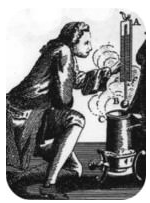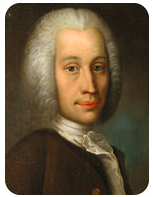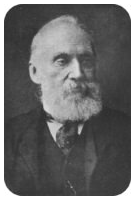3.7: Temperature and Temperature Scales
- Page ID
- 52565

An ice cube in your hand feels cold, but why?
The particles of matter in a hot object are moving much faster than the particles of matter in a cold object. An object’s kinetic energy is the energy due to motion. The particles of matter that make up the hot stove have a greater amount of kinetic energy than those in the ice cube.
Temperature and Temperature Scales
Temperature is a measure of the average kinetic energy of the particles in matter. In everyday usage, temperature indicates a measure of how hot or cold an object is. Temperature is an important parameter in chemistry. When a substance changes from solid to liquid, it is because there was an increase in the temperature of the material. Chemical reactions usually proceed faster if the temperature is increased. Many unstable materials (such as enzymes) will be viable longer at lower temperatures.

Temperature Scales
The first thermometers were glass and contained alcohol, which expanded and contracted as the temperature changed. The German scientist Daniel Gabriel Fahrenheit used mercury in the tube, an idea put forth by Ismael Boulliau. The Fahrenheit scale was first developed in 1724 and tinkered with for some time after that. The main problems with this scale are the arbitrary definitions of temperature. The freezing point of water was defined as \(32^\text{o} \text{F}\) and the boiling point as \(212^\text{o} \text{F}\). The Fahrenheit scale is typically not used for scientific purposes.

The Celsius scale of the metric system is named after Swedish astronomer Anders Celsius (1701-1744). The Celsius scale sets the freezing point and boiling point of water at \(0^\text{o} \text{C}\) and \(100^\text{o} \text{C}\), respectively. The distance between those two points is divided into 100 equal intervals, each of which is one degree. Another term sometimes used for the Celsius scale is "centigrade" because there are 100 degrees between the freezing and boiling points of water on this scale. However, the preferred term is "Celsius".

The Kelvin temperature scale is named after Scottish physicist and mathematician Lord Kelvin (1824-1907). It is based on molecular motion, with the temperature of \(0 \: \text{K}\), also known as absolute zero, being the point where all molecular motion ceases. The freezing point of water on the Kelvin scale is \(273.15 \: \text{K}\), while the boiling point is \(373.15 \: \text{K}\). Notice that there is no "degree" used in the temperature designation. Unlike the Fahrenheit and Celsius scales, where temperatures are referred to as "degrees \(\text{F}\)" or "degrees \(\text{C}\)", we simply designated temperatures in the Kelvin scale as kelvins.

As can be seen by the 100 kelvin difference between the two, a change of one degree on the Celsius scale is equivalent to the change of one kelvin on the Kelvin scale. Converting from one scale to another is easy, as you simply add or subtract 273.
No matter the temperature scale you use, the temperature at which a liquid boils depends on a few different variables. Try boiling water in a few places around the world to see what we mean.
Summary
- Temperature is a measure of the average kinetic energy of the particles in matter.
- The Fahrenheit scale defines the freezing point of water as \(32^\text{o} \text{F}\) and the boiling point as \(212^\text{o} \text{F}\).
- The Celsius scale sets the freezing point and boiling point of water at \(0^\text{o} \text{C}\) and \(100^\text{o} \text{C}\), respectively.
- The Kelvin scale is based on molecular motion, with the temperature of \(0 \: \text{K}\)—also known as absolute zero—being the point where all molecular motion ceases.
Review
- What is absolute zero on the Celsius temperature scale?
- What are the freezing and boiling points of water in the Celsius scale?
- Convert the following Kelvin temperatures to degrees Celsius.
- 188 K
- 631 K
- Temperature in degrees Fahrenheit can be converted to Celsius by first subtracting 32, then dividing by 1.8. What is the Celsius temperature outside on a warm day (88°F)?
- Why is the Celsius scale sometimes called “centigrade”?

